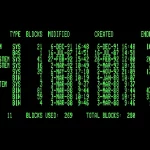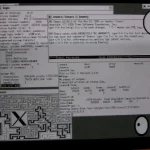Web site:
Origin: USA
Category: Desktop
Desktop environment: GUI
Architecture: x86,
Based on: DR-DOS
Wikipedia: Star Trek
Media: Install
The last version | Released: 1993
Star Trek – a hybrid of Apple’s Macintosh operating system, made to run as an operating system GUI shell application upon Novell’s next in-development version of the DR DOS operating system.
Novell acquired DR DOS from Digital Research in 1991 and wanted to develop it into a graphical PC operating system based on DOS as the operating system kernel and the GEM (or ViewMAX) graphical user interface. However, since Digital Research had already been sued by Apple over GEM in 1985, Novell management was keen to avoid another lawsuit from Apple. Therefore, in 1991, Novell approached Apple to jointly develop an operating system for the IBM PC that would compete with Microsoft’s Windows 3.0. Apple, for its part, had already toyed with the idea of porting its own operating system to the IBM PC in the mid-1980s, but never implemented it. In 1991, Apple’s then CEO, John Sculley, liked the idea and approved it; Intel CEO Andy Grove also expressed interest in order to avoid being completely dependent on IBM and Microsoft (PC DOS or MS-DOS and Windows, see Wintel). Thus, starting in the summer of 1992, they began working together on the port of the Apple operating system. Four Novell developers and 14 Apple developers were involved in the top-secret project called “Star Trek.” In an office building in Santa Clara, across the street from Intel, each developer was given their own office, a Macintosh, and a 486-bit PC donated by Intel.
DR DOS “Panther” served as the basis. Based on this, System 7.1 was ported to the x86 architecture and DOS. After just three months, at the end of 1992, a stable prototype was ready and presented to Apple and Novell. Apple was amazed to see its own operating system running on the x86 hardware – until then, they had assumed that it would be impossible to use the operating system without the Macintosh Toolbox (the actual Macintosh API), which was included in the ROM of every Macintosh, and this toolbox was considered difficult to port. However, the project was approved and development continued. The number of developers was increased to 50.
At Apple, the biggest proponents of “Star Trek” were Vice President Roger Heinen and CEO John Sculley, but both soon left Apple. Roger Heinen was poached by Microsoft in 1992, and John Sculley was succeeded as CEO by Michael Spindler shortly thereafter in 1993. At the same time, in 1992, Apple entered into a collaboration with IBM and Motorola to introduce a new processor architecture. The PowerPC, based on IBM’s POWER, was intended to replace the Motorola 680×0. The processor itself was to be manufactured by both IBM and Motorola. Therefore, Apple was skeptical about launching a PC x86 operating system that would, on the one hand, be in direct competition with the Macintosh and thus also with the PowerPC.
There were also increasing problems on the PC side. One of the “Star Trek” developers, Mark Gonzales, originally believed there was a profitable market for a PC System 7, but when the operating system was first shown to various PC manufacturers in 1993, they were unwilling to pay for it. The reason for this was that the manufacturers were bound by a contract with Microsoft to pay a certain amount to Microsoft for every computer sold – regardless of which operating system was actually installed. The PC manufacturers would have had to pay twice – or offer “Star Trek” to Apple for free, which would have doubly undermined the market for the Macintosh.
After Michael Spindler took over as CEO, making it his mission to restore Apple’s competitiveness in crisis, he imposed a rigorous cost-cutting program on the entire company – which ultimately spelled the end of “Star Trek” in June 1993.
At a developer meeting in 1997, the project was demonstrated once again: After a few attempts, “Star Trek” could be started on a PC. The greeting text “Star Trek: Boldly Going Where No Mac Has Gone Before” appeared – a reference to the Starship Enterprise, whose introduction states: “… where no man has gone before.” The developers were unanimous in their opinion that System 7 would have had a real chance on PCs and would probably have been available a year before Microsoft’s great success, Windows 95.
Source: Wikipedia; License: Creative Commons Attribution-ShareAlike 4.0 License.




